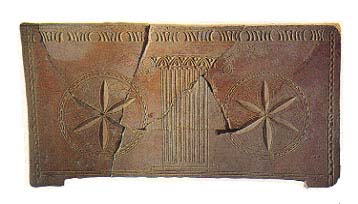Image Details

Garo Nalbandian
One of the ossuaries discovered in the burial cave. Decorated with two six-petaled rosettes within concentric circles, the bone box displays a fluted column on a stepped base and topped by an Ionic capital.
Ossuaries were used primarily in the roughly one hundred years preceding the Roman destruction of Jerusalem in 70 C.E. and probably reflect a belief in the physical resurrection of the body after death. The deceased was placed in a recess carved into the wall of a burial cave; after the flesh had decomposed, the bones were collected and placed in an ossuary—a container usually of decorated limestone.
